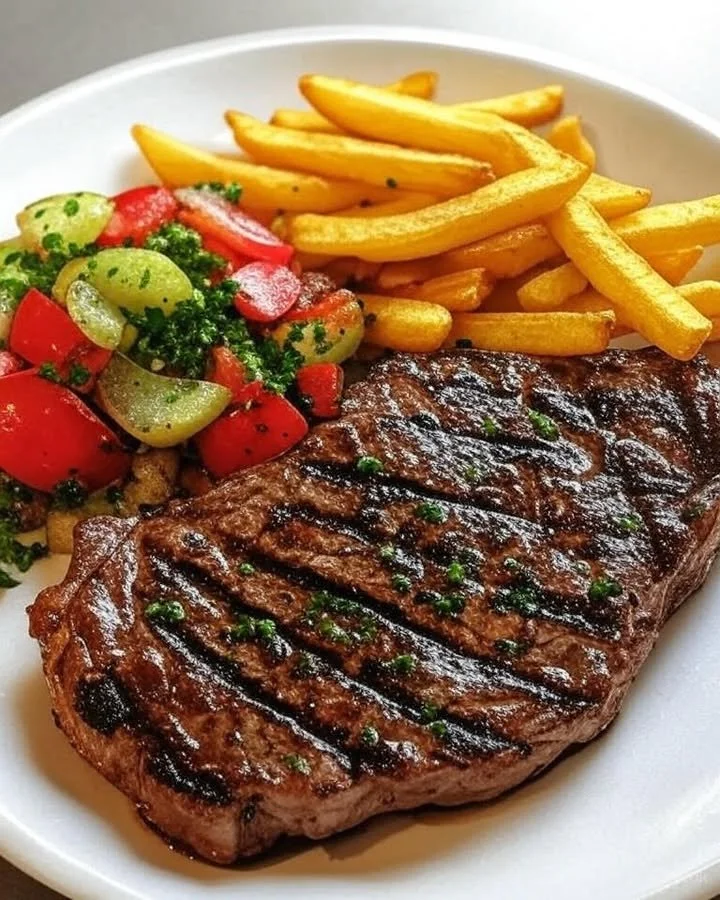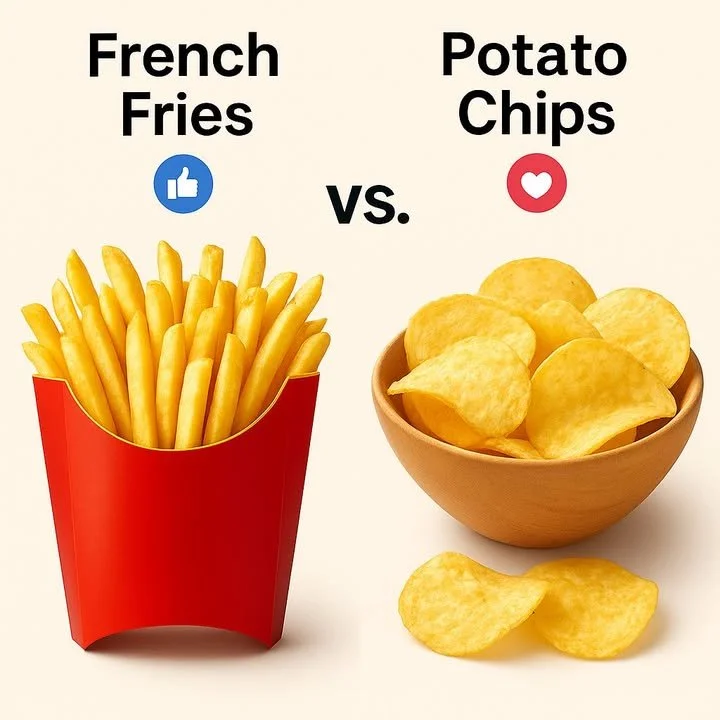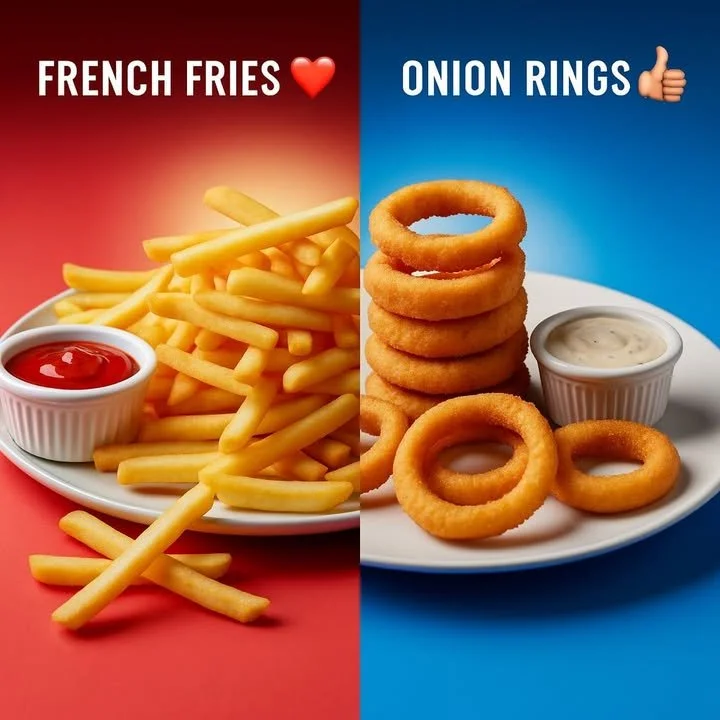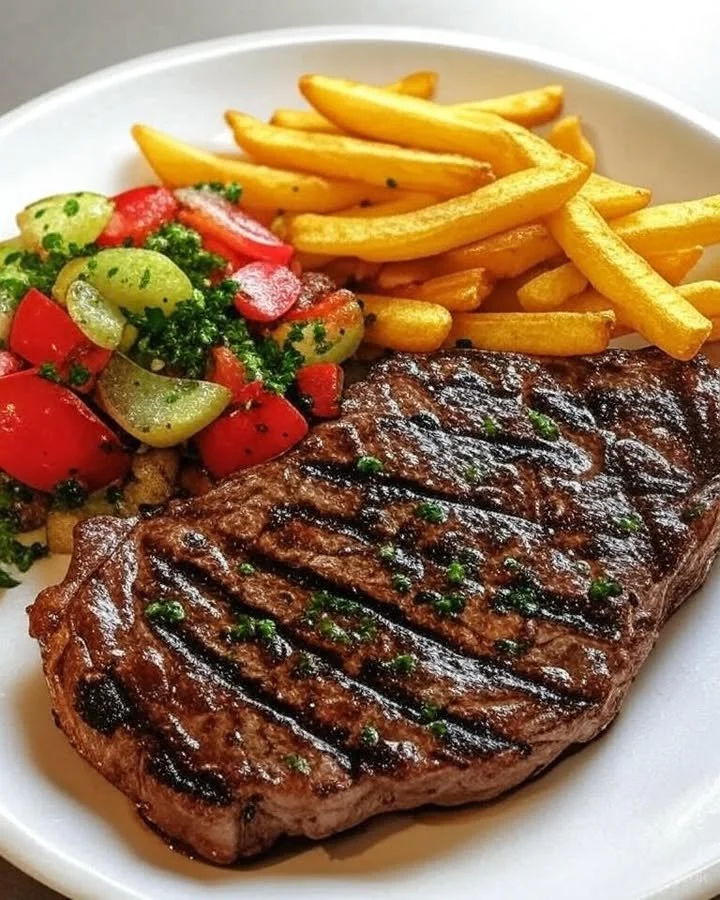French Fries

Crispy, Golden French Fries: My Comfort Food Love Story
Is there anything more comforting than a hot, crispy batch of French fries? Just thinking about them takes me back to Saturday afternoons at my grandma’s, where we’d peel potatoes together, giggling as the little curls fell into the bowl. The sizzle of potatoes hitting hot oil, that irresistible aroma wafting through the kitchen—French fries have always been my ultimate comfort food. Whether it’s late-night cravings or a special family movie night, nothing beats the simple joy of homemade fries. If you’re ready to skip the drive-thru and experience the magic of real, homemade French fries, you’re in the right place!
Why You’ll Adore These French Fries
Let me tell you, making homemade French fries isn’t just a recipe—it’s an experience. Here are my favorite reasons you’ll fall in love with these fries:
- Total crowd-pleaser: French fries have a way of bringing everyone to the kitchen. Whether it’s kids, friends, or family, no one can resist them fresh and hot.
- Customize to your heart’s content: Craving extra-crispy? Love spicy? Want to experiment with dipping sauces? This classic French fries recipe is your playground.
- So easy and budget-friendly: With just potatoes, salt, and oil, you get a snack that’s both delicious and affordable—no fancy equipment required!
- Better than takeout: There’s something wildly satisfying about biting into fries you made yourself. Homemade just hits differently, and you get to control every flavorful step.
Ingredients You’ll Need for French Fries
Before you start, here’s what you’ll need to create the best French fries at home (with a few of my personal pointers):
- Potatoes: I love using russet potatoes. They’re starchy and give fries that perfect golden crunch. Yukon golds work too if you want a creamier inside.
- Salt: Simple table salt is classic, but sometimes I’ll sprinkle on flakey sea salt for an extra pop.
- Oil for frying: I typically use vegetable or canola oil because they hold up well to high heat and let the natural potato flavor shine. (Peanut oil is also a delicious option for extra-crispy fries!)
Step-by-Step Guide: Making the Perfect French Fries
Don’t worry if you’re new to frying at home—I’ll walk you through each step (I’ve learned a tip or two from trial and error!):
- Peel and cut the potatoes: Peel your potatoes (unless you love the rustic skin-on fries—totally your call!). Cut them into thin, even strips. I aim for about 1/4 inch wide, so they cook evenly.
- Rinse and dry: Pop those cut potatoes into a bowl of cold water. It removes extra starch, keeping your fries separated and crispy, not mushy. Dry thoroughly with paper towels; water and hot oil do not mix.
- Heat the oil: Pour oil into your deep fryer or a heavy skillet (I use my trusty cast iron). Heat it to 350°F (175°C)—a kitchen thermometer is super handy here.
- Fry in batches: Add a handful of potato strips at a time. You don’t want to overcrowd the pan. Fry for 3-5 minutes until golden and crispy. (Sometimes I double-fry for extra crunch—a quick first fry, then a hotter second fry!)
- Drain and season: Use a slotted spoon to transfer fries to paper towels. Sprinkle with salt right away while they’re hot.
- Serve: Eat immediately, with your favorite sauces (hello, homemade garlic aioli or classic ketchup).
My Secret Tips and Tricks for French Fries Success
You know that dreamy crispy French fries texture you get at restaurants? Here’s how to nail it every time:
- Use starchy potatoes: Russets work best for fluffy interiors and crisp exteriors (fries that are crispy outside, tender inside—yes please!).
- Soak the slices: Soaking draws out excess starch, preventing them from sticking together and giving you perfect fries.
- Dry them well: Moisture is the enemy of crispiness. After rinsing, pat those strips as dry as possible.
- Right oil temp: Keep your oil steady at 350°F. Too cool, and your fries will get greasy; too hot, and they’ll burn.
- Salt immediately: Salt sticks best right after frying so every bite is seasoned.
When I first started making homemade fries, I learned (the hard way!) that patience is key—don’t rush the process.
Creative Variations and Ingredient Swaps
Craving a fun twist or need to adapt your French fries for dietary needs? Here are some favorite variations:
- Sweet potato fries: Substitute sweet potatoes for a vibrant color and a touch of natural sweetness. (Just lower the oil temp to 325°F.)
- Baked fries: Not up for frying? Toss the potato strips in a little oil, spread on a baking sheet, and roast at 425°F until crispy, flipping halfway.
- Spicy seasoning: Add a dash of paprika, garlic powder, or chili flakes along with your salt for a custom flavor kick!
- Low-sodium: Skip or reduce the salt, and try dusting your fries with dried herbs like rosemary or thyme.
- Air fryer French fries: Use your air fryer for an oil-free, guilt-free version. They get super crisp (and you don’t have to heat up a big pot of oil).
How to Serve and Store Your French Fries
For the best experience, enjoy your fresh French fries piping hot and crispy straight out of the fryer. I love serving them with:
- Ketchup, mayo, or spicy aioli
- Melted cheese, for loaded cheese fries
- A side of tangy pickles (honestly, don’t knock it until you try it!)
If you’ve got leftover fries (rare in my house!), store them in an airtight container in the fridge for up to two days. Reheat in a single layer in the oven or air fryer at 400°F for a few minutes to bring back some crispiness—don’t microwave unless you’re okay with softer French fries.
FAQs: Your Top Questions About French Fries Answered
Can I prep French fries ahead of time?
Absolutely! Cut and soak your potatoes, then keep them covered in cold water in the fridge for up to 24 hours. Just dry them thoroughly before frying.
What’s the best oil for frying French fries?
Look for oils with a high smoke point, like canola, vegetable, or peanut oil. They give fries that perfect golden color without any weird aftertaste.
Why are my fries soggy?
Soggy fries usually mean too much moisture or oil that isn’t hot enough. Pat those potatoes dry and make sure the oil is at 350°F before frying.
Can I use other potatoes?
Yes! While russets are classic, Yukon golds yield a creamier fry. For a twist, try sweet potatoes or even purple potatoes for color.
How do I get restaurant-quality crispiness at home?
Soak, dry, and (if you have time) double-fry! That extra step—frying twice—makes all the difference for ultra-crispy French fries.
—
There you have it! Making French fries at home is as fun as it is delicious, and you’ll be surprised by how quick and satisfying it is. Give these a try, and let me know if you’re as obsessed as I am—because every great day deserves a tray of fries. 🍟



